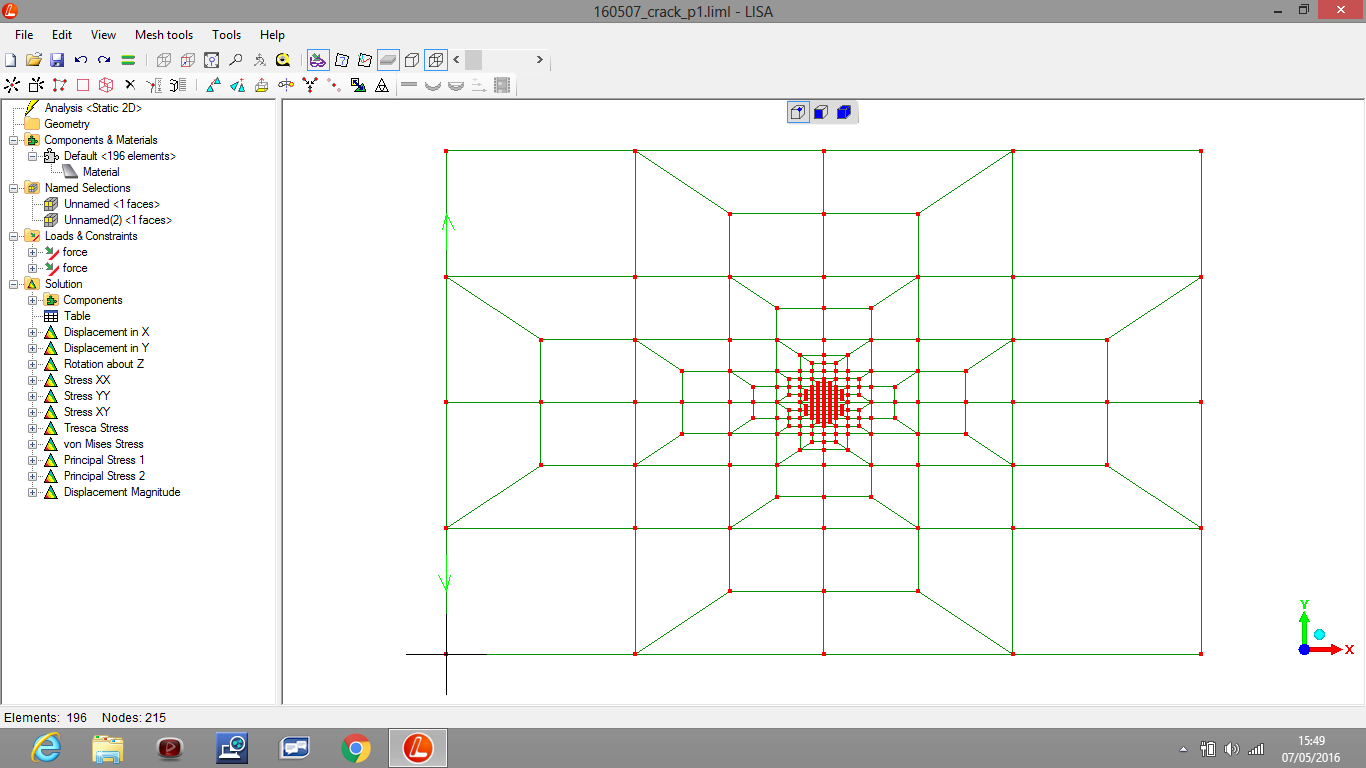
You'd have to be super-expert to know whether this a commercial tool
can be applied to correctly investigate crack-tip
stress-concentrations.
Undeterred, I produced these pretty pictures...
The sample is similar in shape to a "tensile" CTOD sample used for material testing, for evaluating fracture-toughness of materials. Increasing the amount of context information and data available to evaluate how well my simulations are doing...
Similar to previous
The mesh
"open cracks" (in the mesh) literally reveals the modelled crack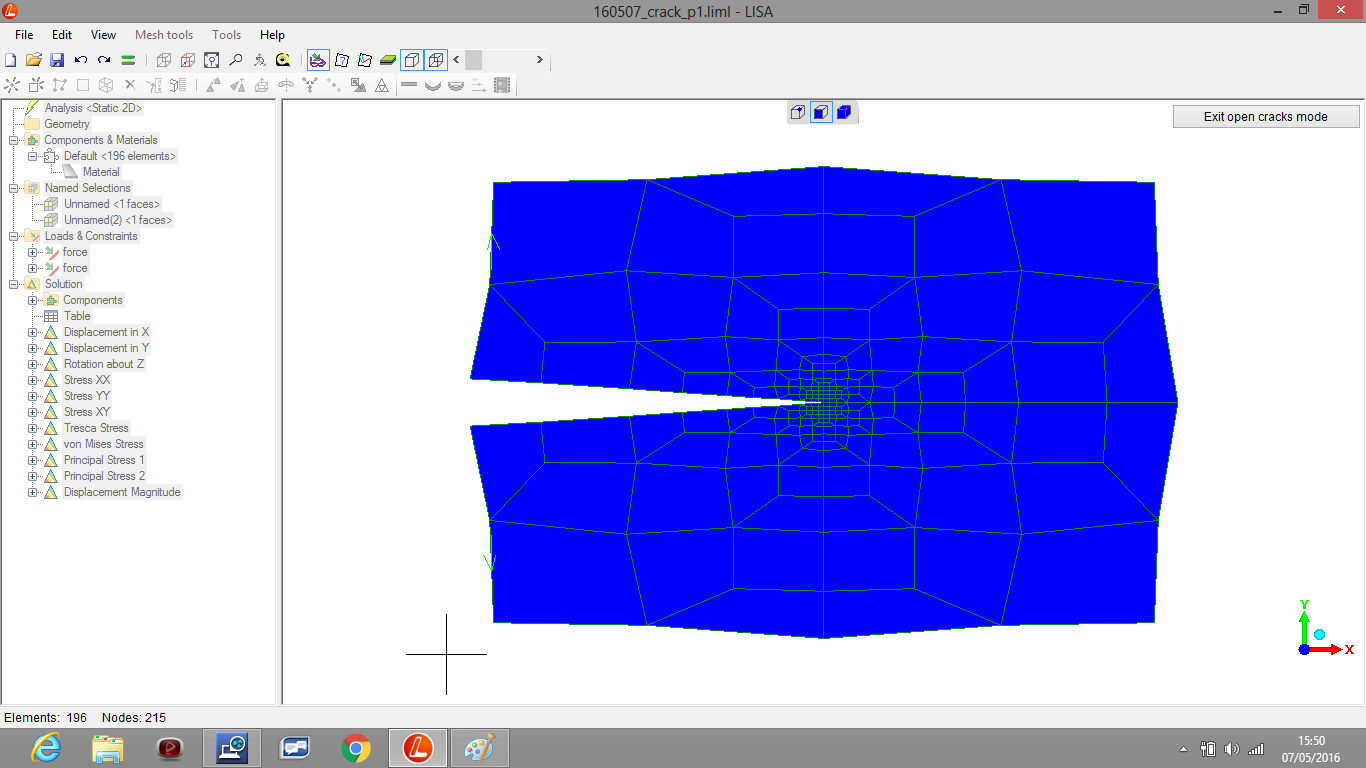
Results. These displays show vastly exaggerated elastic deformation - so the nature of the elastic deformation can be visualised by the human viewer.
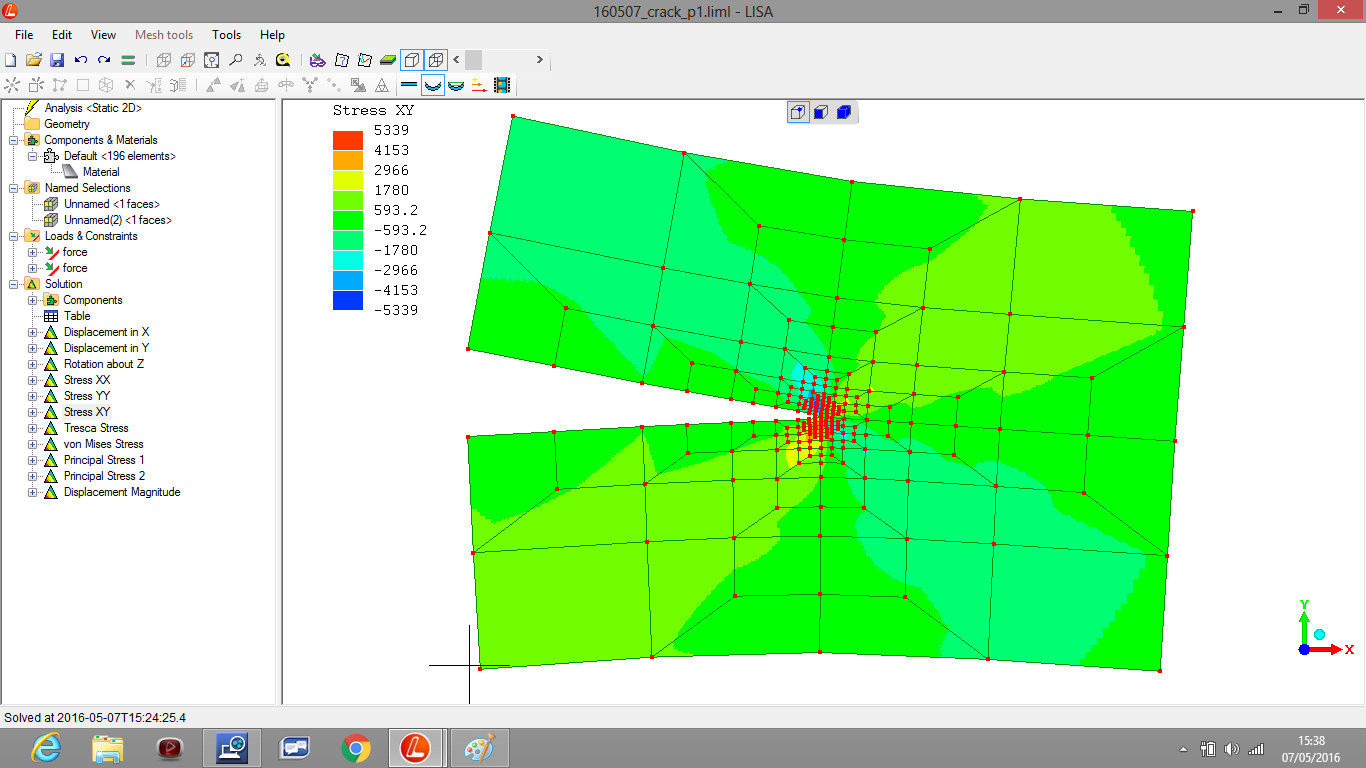
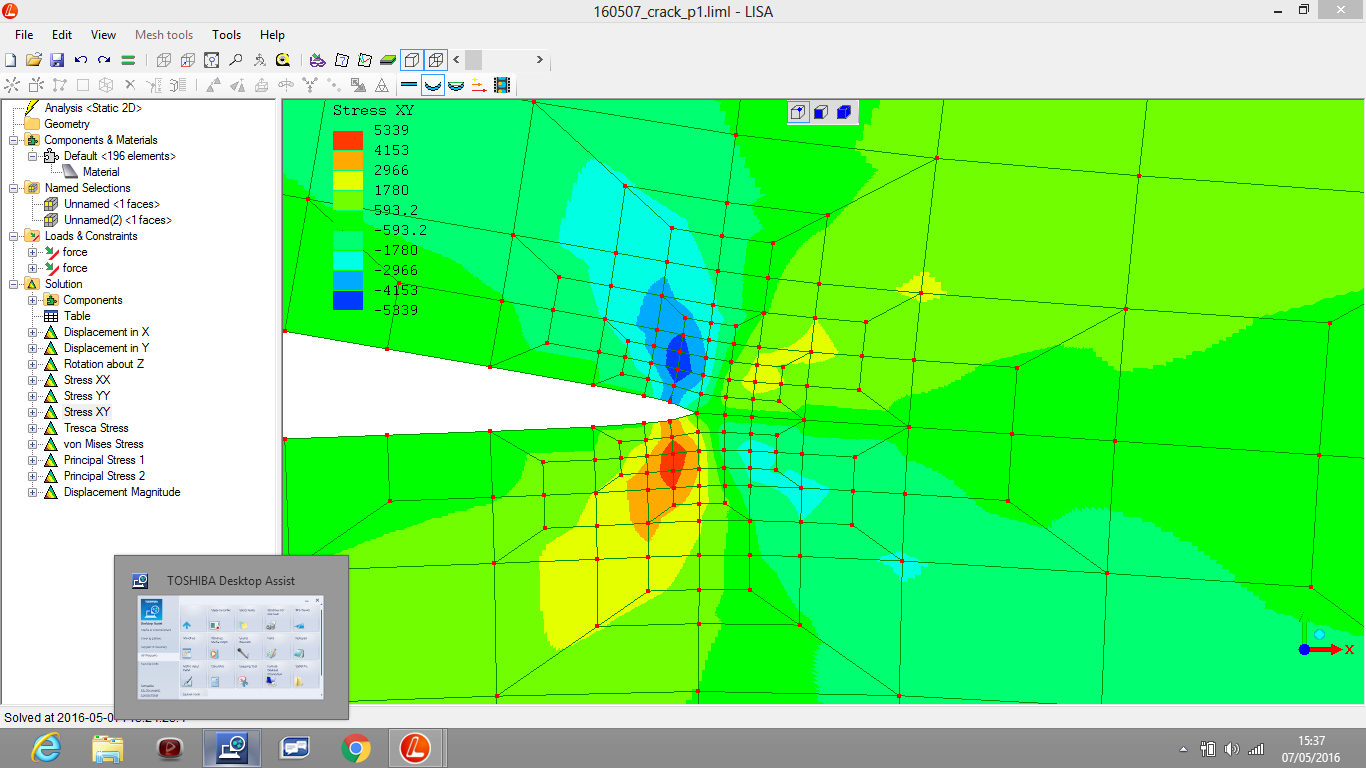
This is it - now modelling in full 3-D.
The modelled component now has finite size, so will have varying stresses along the "z" direction, as head to the middle of the sample, with increasing self-constraint (???).
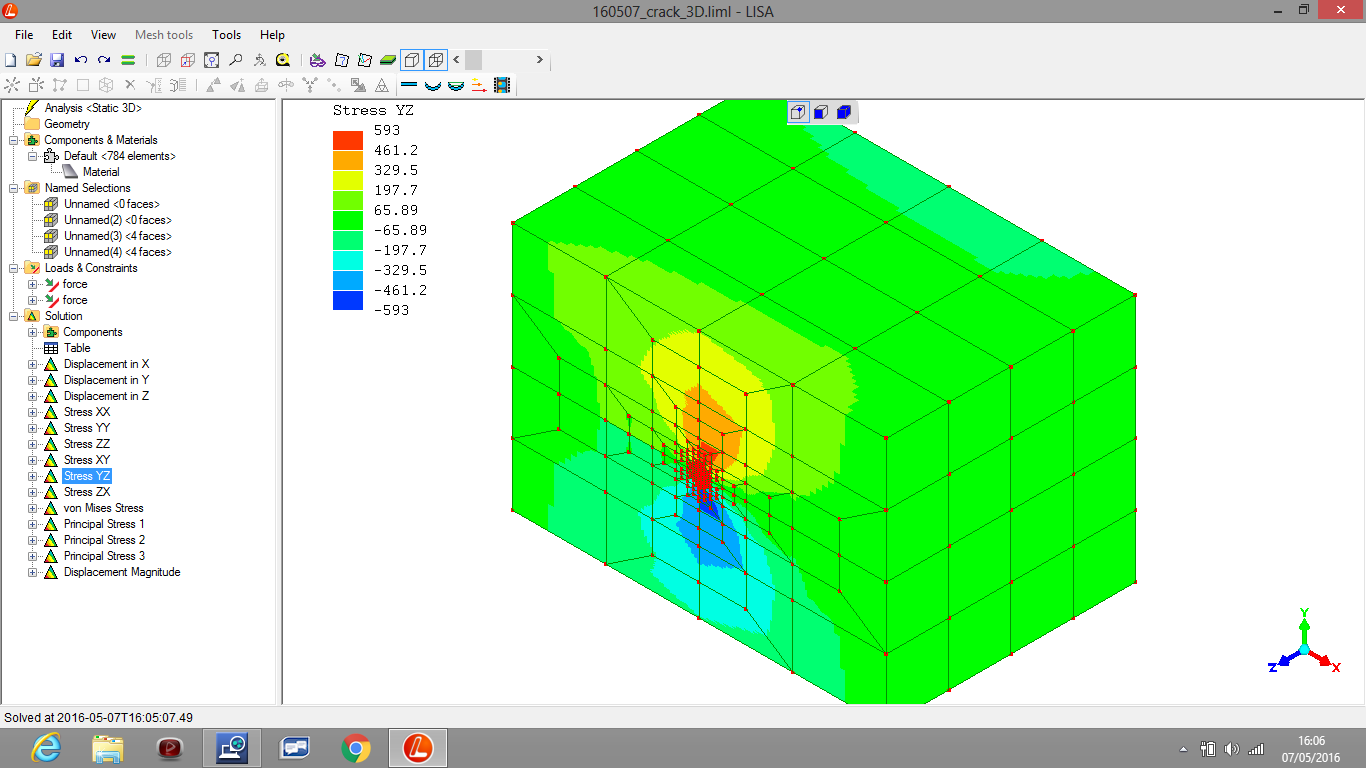
2-D views of this 3-D model
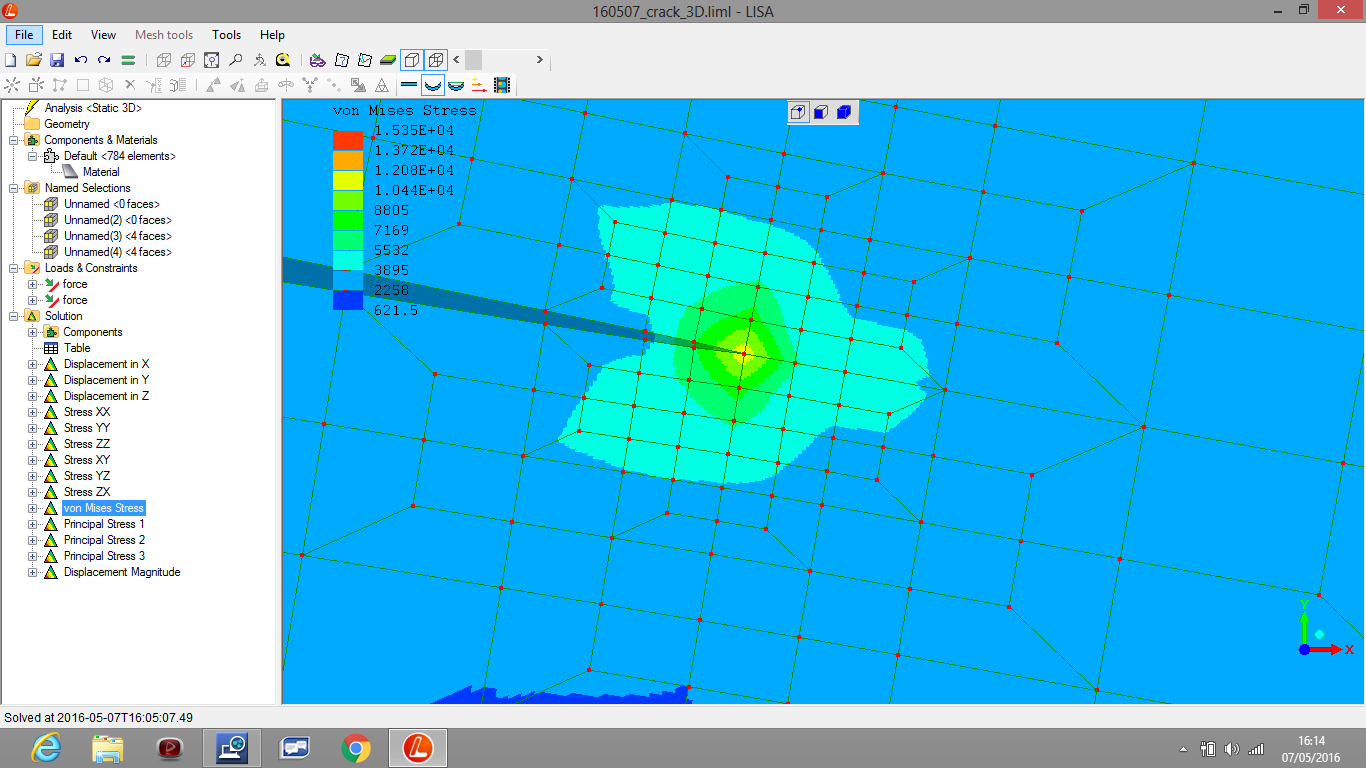
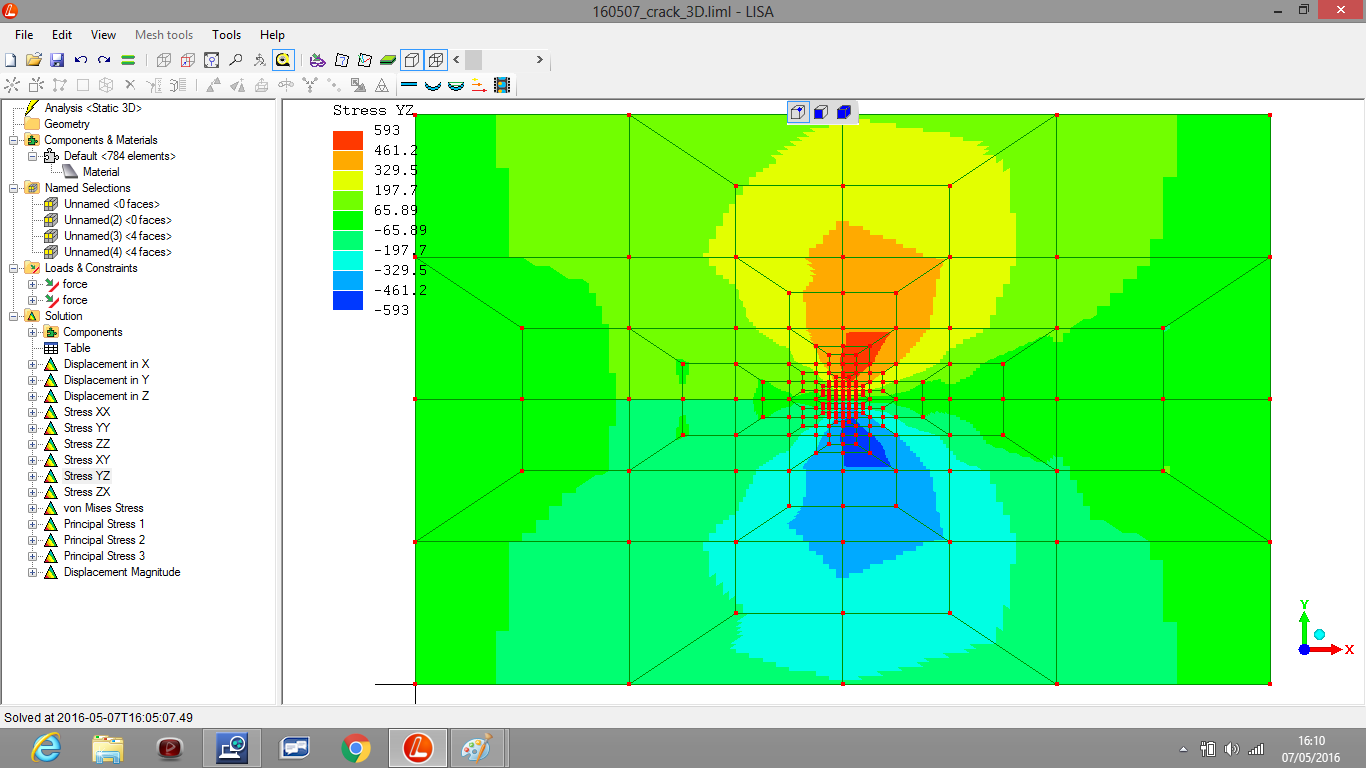
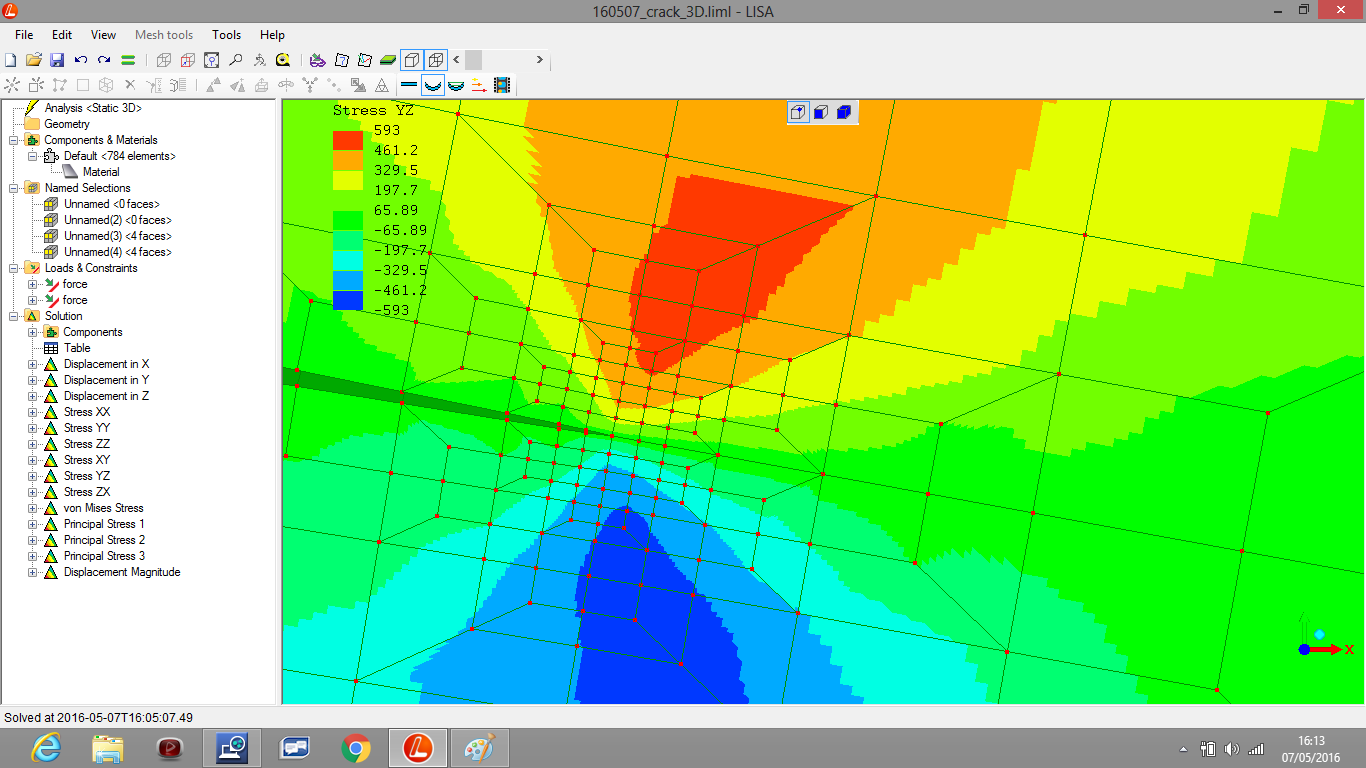
(R. Smith, 17May2016)